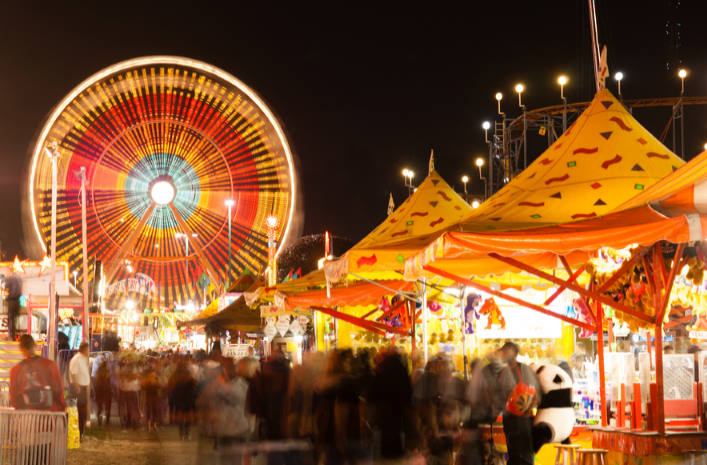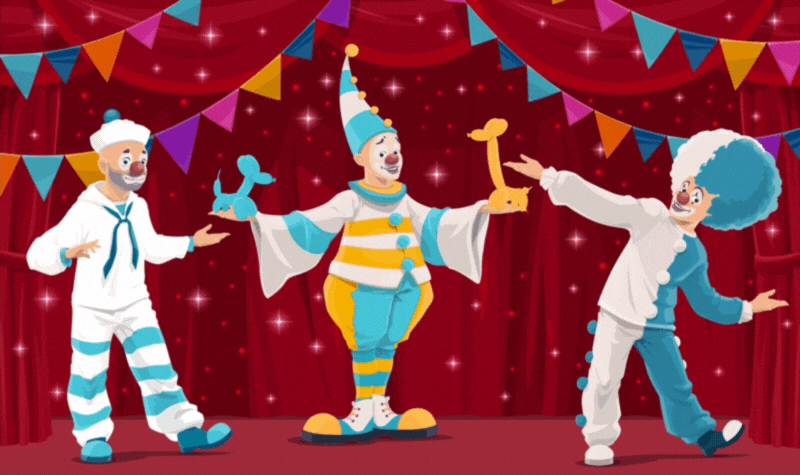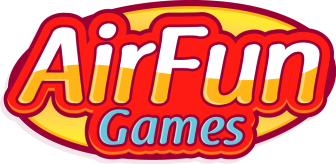
People often think of fairs and carnivals as the same thing, but there are differences. When comparing fairs vs. carnivals, it’s important to remember that carnivals are typically traveling shows that evolved from ancient celebrations and religious holidays, while fairs bring people together for an annual community event. Both remain wildly popular even after centuries of existence.
Below we’ll look at some of the details that make one event a carnival and another a fair, but first…
Can You Find The 10 Differences?

History of the Fair
The history of fairs dates back in America to at least 1841 when the country was still very young. Food was a centerpiece of a fair from the start, with farmers competing to grow the biggest and best of different types of crops. Those early fairs, usually in the late spring or summer, gave an opportunity for communities to come together and celebrate the harvest.
The beginnings of the state fair are found in Pittsfield, Mass., where a wealthy farmer and businessman named Elkanah Watson showed his sheep in the public square. Early fairs also featured recipe judging – as in, who could make the best cake? Fair attendees reaped the benefits of having lots of great food to sample.
Outdoor Party Planning, Florida Style
Livestock judging also became a staple of fairs in the 19th century. Ranchers would bring the best specimens from their livestock to be judged by a panel of experts – a competition that continues to this day.
All the above has been mixed with deep-fried everything, midways and thrill rides to create the modern fair. But the idea of games and rides has its beginnings in carnivals.
History of Carnivals
When you consider carnivals vs. fairs, it’s important to remember that carnivals have a much older history – back to the earliest written histories. As far back as 98 AD, the Roman historian Tacitus wrote in “Germania” that Germanic tribes held celebrations that featured games, food, music and dancing. They celebrated the end of winter, taking out the last of the stored food and eating it before it spoiled.
This later became a celebration tied to religious holidays, such as the days before the Catholic Lent when people indulge in food and wine before it’s all given up for Lent. These events included parades, street parties and have a bacchanal atmosphere (think Mardi Gras today).
Carnivals in North America came much later, in the 19th century. These traveling shows took aspects of carnival holidays, circuses and minstrel shows that featured singing, dancing and music. With the invention of the carousel and other rides, traveling carnivals became a fixture in American entertainment.
Interestingly, a carnival-type midway is now often part of most state fairs.
Today, state and county fairs continue to be held each year around the country. Carnivals have largely been replaced by amusement parks. However, while they reached their most popular point during the Depression, many traveling carnivals still make their way across the country every year.
Adult Birthday Party Checklist
Find The Differences Answers



Thanks for explaining that carnivals have a longer history and are less farming-oriented than fairs typically are. I want to hold a fundraiser this fall, so I have been thinking about putting on a small carnival. It seems like a good way to raise funds while also providing fun activities for the locals.
Amy Taaaaaaaannnnn!!! Lemme know how you like it.